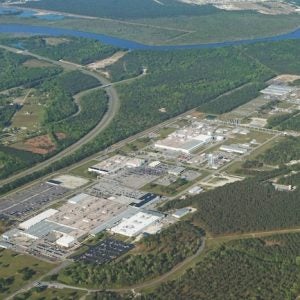
Nuclear technology providers need certainty from governments to set energy policy so that it is well understood and predictable, with roadmaps that clearly outline nuclear power’s role in their respective energy transition plans. In the UK, for example, a target to build 24 GW of new nuclear by 2050 helps do this and acts as a guiding North Star as we consider which markets to invest in globally. We’ve also seen the US, Canadian and Polish governments provide similar certainty on SMRs, which means we’re also prioritising these markets to deploy our SMR technology – the BWRX-300.
But governments also need to provide nuclear regulators with a suitable mandate to ensure safety and also efficiency in licensing designs. Crucially, governments and international bodies need to maximise and optimise the collaboration between regulators across borders, to achieve some form of base-level harmonisation in regulatory design. Regulatory differences across borders can introduce significant extra costs and outcome uncertainty, slowing down the process of getting much needed new nuclear capacity online as we edge ever nearer to the 2050 net zero deadline.
Since the dawn of the nuclear age, reactor designs across the world have largely been country specific and site-specific, making regulatory collaboration harder, but
it doesn’t have to be this way. Successful deployment of cost-competitive SMRs relies on regulatory alignment more than any other class of reactor because they are based on the very idea of repetition and modularisation. This makes international regulatory cooperation more important than ever. An efficient rollout of SMRs relies on the repeat build of identical units based on a standard reference design and using a modern production line.
Their modular nature also means faster and more flexible deployment, with each SMR reactor brought on-line in sequence at any given site.
The World Nuclear Association’s Cooperation in Reactor Design Evaluation and Licensing (CORDEL) working group – which I’ve chaired since December – and the IAEA Nuclear Harmonisation and Standardisation Initiative are also doing some great work with industry and regulators to advise on SMR licensing harmonisation.
The CORDEL Workshop Korea 2024 was a recent milestone moment that highlighted the enormous progress that has been made in regulatory cooperation and collaboration between the nuclear industry and regulators. However, it also highlighted that we cannot continue to accept the paradigm that a nuclear plant project needs to take 10 years. So, much more work is still needed.
Regulators have been proactive in engaging in collaborative reviews, and reviewing their frameworks, to move towards becoming an enabler for the growth of nuclear. However, more regulators need to be engaged in these activities, and they continue to need to receive mandates and sufficient resources to effectively engage and support these collaborative activities from their respective governments.
There is renewed interest in the nuclear sector around the world, but there is also a very limited window of opportunity to deliver early wins with the ongoing first of a kind projects. Therefore, the nuclear industry needs to intensify its efforts to close the “talk – do” gap. Efforts should be undertaken to strengthen collaborative activities both amongst nuclear industry organisations, and with the regulators, and ensure that the sector-wide collaborative activities are maximised and result in impactful outcomes, that are shared widely.
All these activities need to be established at the institutional level and supported and coordinated effectively by international organisations. A culture of collaboration must also be implemented within organisations to ensure that it outlives the tenure of our current trailblazing leaders and becomes ingrained in how we do business.
We therefore welcomed the agreement between the UK, US and Canadian nuclear regulators in March to collaborate on the assessment of SMR designs. We are already seeing positive collaboration between the US and Canadian regulators, with the UK and Polish regulators also recently joining in, which we hope will mean common understanding and common design reviews which will in turn reduce costs and schedules.
The nuclear sector currently benefits from the attention of policymakers. Blueprints around the world for greater regulatory collaboration already exist – as highlighted
by our work with CORDEL and the growing collaboration between a growing number of nuclear regulatory authorities. But this ever-closer working needs to intensify if SMRs are to realise the ambitions of industry and governments around the world.






